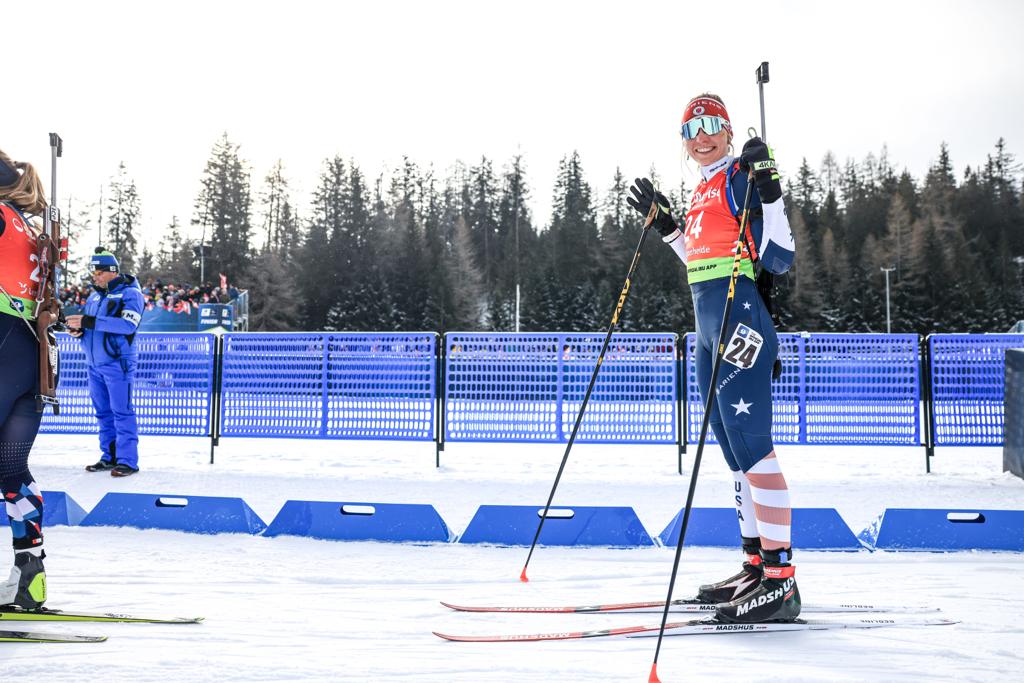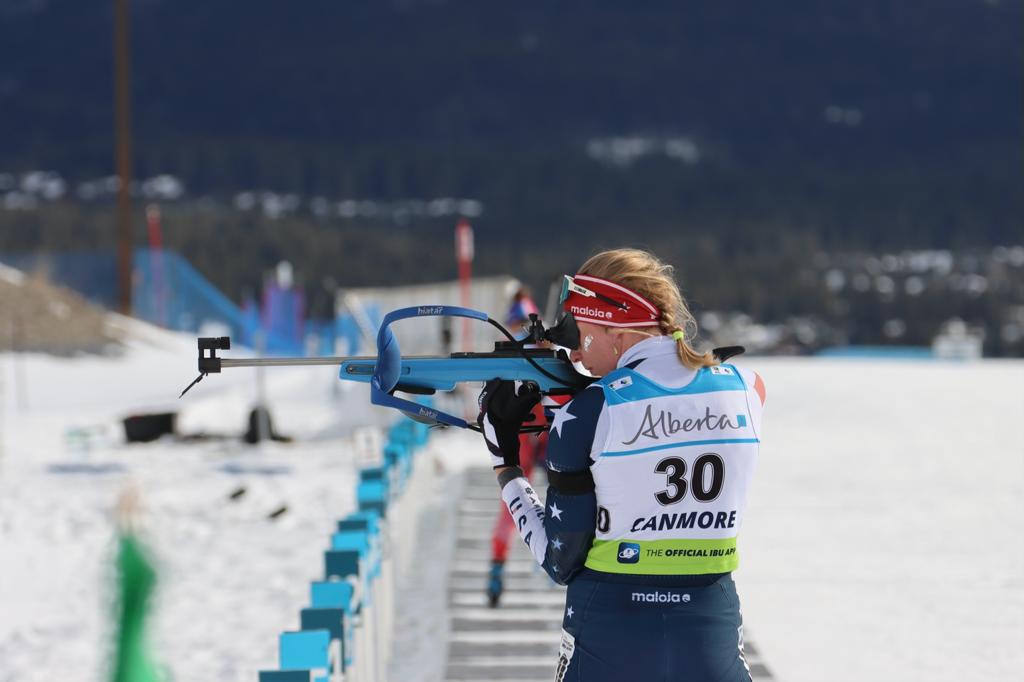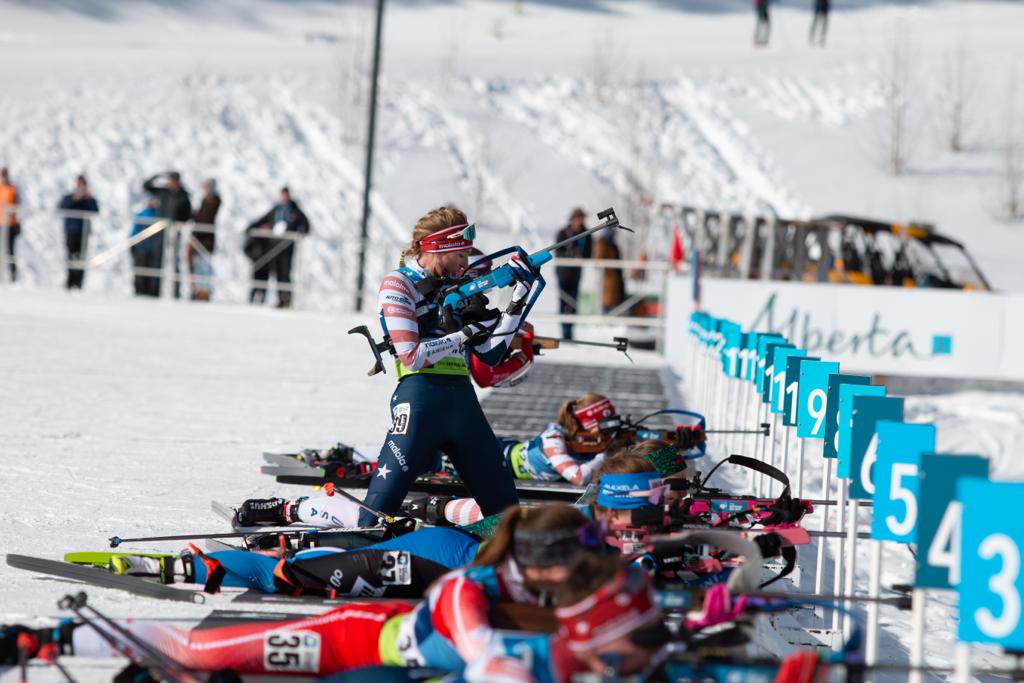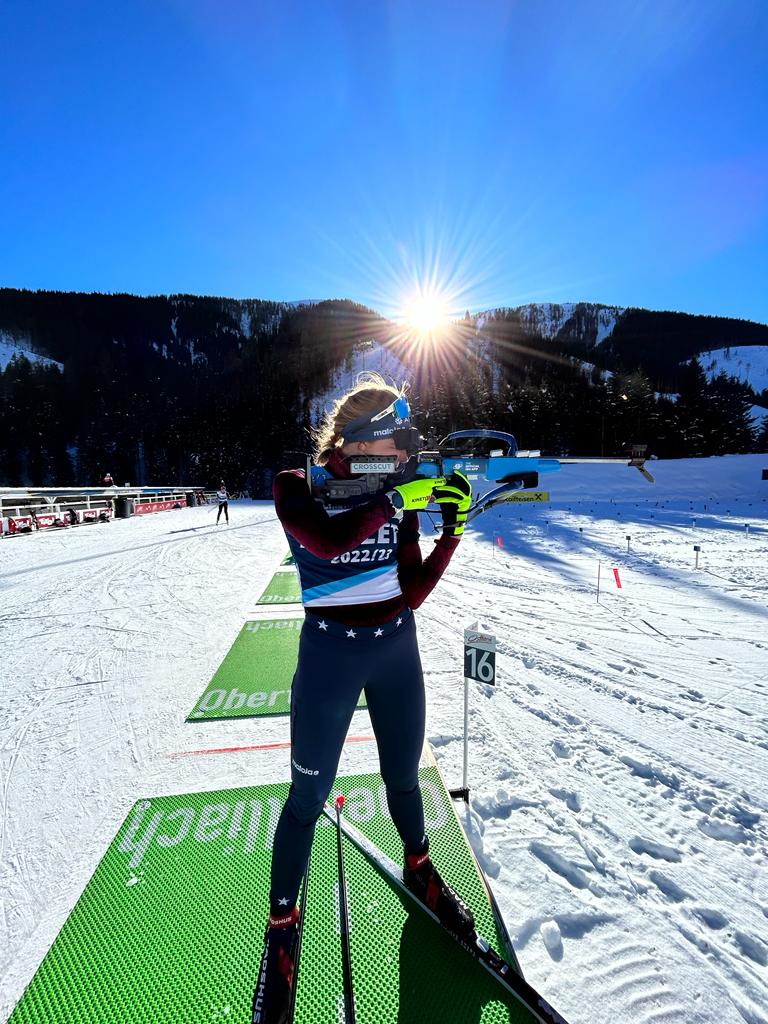Posted by Amanda Kautzer on Nov 11th 2023
Training with the Flow: Harnessing Your Menstrual Cycle for Better Performance
Training with the Flow: Harnessing Your Menstrual Cycle for Better Performance
Leading up to the 2022 Olympic games, I stumbled into the perfect personal performance experiment: three sets of races separated by two weeks each, and coinciding perfectly with notable events in my menstrual cycle. The first round of Olympic trials fell right around my ovulation, and I was on FIRE - both skiing really well and with heightened focus for shooting. Two weeks later, I utterly embarrassed myself with back-to-back last place performances at the second round of Olympic trials. Finally, after another two weeks of feeling bad about my races, I had my at-the-time career best international finish as part of a string of well above average performances - again, right around ovulation. This got me thinking about the effect of my period on performance for the first time, as opposed to the effect of my training on my period.

Throughout my high school and collegiate career, I frequently had been educated on the female athlete triad which is 1) an imbalance in fuel-input compared to energy-output resulting specifically in 2) loss of period and 3) decreased bone density. Therefore, I understood training and my cycle as a very binary relationship: either I was fueling enough relative to my training expenditures and had a regular period (Yay! Healthy!), OR I was underfueling, manifested in the form of an abnormal cycle and increased risk of health problems (Yikes! Pump the brakes on training!). So, because my period had been regular since stopping hormonal birth control a few years prior, I thought it had nothing to do with variations in my performance… until my unintentional experiment. (Side note, more recently the female athlete triad nomenclature has been revised to Relative Energy Deficiency Syndrome (RED-S) or Low Energy Availability (LEA), which encompasses both male and female athletes, as well as is more generally understood as decreased performance and and increased health risks.)

For a long while after I realized there was a connection between ovulation, menstruation, and my race performance, I tried to figure out the relationship by tracking more and more things in my training log. However, I was never able to tease out the effect of my period from the noise of variations in training stress through tracking my sleep, personal stress, altitude, social fulfillment, exposure to illness, nutrition, and the list goes on.

Luckily, I recently attended a presentation from a pair of local nutrition and female health professionals. While I’m not a medical professional, I wanted to share at a high level what I learned, and how I think it’s shown up in my performance and training.

First, a super duper brief physiology lesson for context: Healthy females between puberty and menopause have a menstrual cycle that lasts roughly 28 days. Cycle day 1 starts on the first day of bleeding. Ovulation, or the release of an egg from an ovary, occurs roughly in the middle of the 30-ish day cycle. Though there are more in depth ways to break down the cycle, the first day of bleeding up until ovulation is considered the follicular phase, and from ovulation up to just before the next bleed is considered the luteal phase.

To summarize the presentation and how physiology affects endurance training: In the follicular phase, the body is putting energy into preparation for pregnancy. It’s a phase dominated by estrogen, which is responsible for building the uterine lining and strengthening the body in the form of stimulating cell growth, improving blood vessels, and slowing down bone breakdown. The second half of the cycle, the luteal phase, is dominated by progesterone. During this phase, the body obsesses over protecting the egg, regardless of whether it’s been fertilized into a tiny-human-to-be. What this means for us endurance athletes is that the body DOESN’T REALLY CARE what your training plan says during this time. This manifests in our biomarkers as: 1) higher resting heart rate, 2) lower heart rate variability (HRV), 3) higher respiratory rates, and 4) higher basal body temperature. To summarize: the body has a decreased ability to recover from training stress during the luteal phase. Or, to flip that same coin, the body has an increased ability to recover from training stress during the follicular phase.

Coming back to my unintentional experiment… After that first set of good races during my follicular phase, I decided to implement the same training plan leading into the second series of races. By implementing the same training plan during my luteal phase as I had during my follicular phase, I gave myself the same training load at a time when my body had less ability to recover, resulting in an accumulation of fatigue. Although I was technically back in the follicular phase and actively menstruating when I reached the second set of races, I had already dug myself a hole and did not perform well. Following my poor race results, I took a couple days off before getting back into training. With hindsight being 20/20, I believe this allowed me to climb out of the fatigue-hole so, by the time I raced the 3rd set of races, I was back to performing well.
Because we rarely get the chance to intentionally experiment with our bodies like this, nor do we get to choose when our cycles fall relative to our FIS, IBU, or local race calendar, as females, I think it’s critically important to be aware of our cycles; sometimes our bodies need a little more TLC, and sometimes they can handle an extra intensity session.
My last take away from the presentation I’d like to share is on the topic of a regular period compared to a regular ovulation. Biologically, the human body wants to reproduce. For females, that means releasing an egg; however, if the body perceives that the environment would be unhealthy for a baby, it will without the biological signals to ovulate. Historically, this could be a period of famine, which essentially gives the same signals as under-fueling does today. In this situation, females may experience a bleed, but not ovulation. Understanding this really brought to light that healthy training is not as binary as I thought. In hindsight, I think I’ve experienced seasons of unhealthy imbalance where I’m training too hard, so don’t ovulate, but not hard enough to completely miss a period.
While I am by no means an expert in this topic, I still feel it’s important to share for the sake of awareness. For female athletes, I think paying attention to your body and giving yourself the space to take an extra day off, or do an extra interval, can make a difference when it comes to small incremental gains. For male athletes, I think it’s important to have at least a super basic knowledge to understand that a female teammate isn’t being “weak” or “lazy” by taking an extra day off. On the flipside, if a female teammate is crushing an extra interval or two because she’s feeling invincible, that doesn’t mean he’s any less capable. For coaches, I think there is huge potential for helping improve athletes’ performance by tailoring training around cycles. For everyone in the sports community, I think it’s important to critically assess all studies and understand that historically, most of the data we have is from male participants. And finally, it’s important to remember that every individual responds differently to training and has a unique experience in sport; I’ve shared an incredibly simplified version of my story not to say it’s the absolute truth, but in the hope that by sharing my experience publicly, others will feel more comfortable bringing up the topic with their coaches, teammates, and friends.


